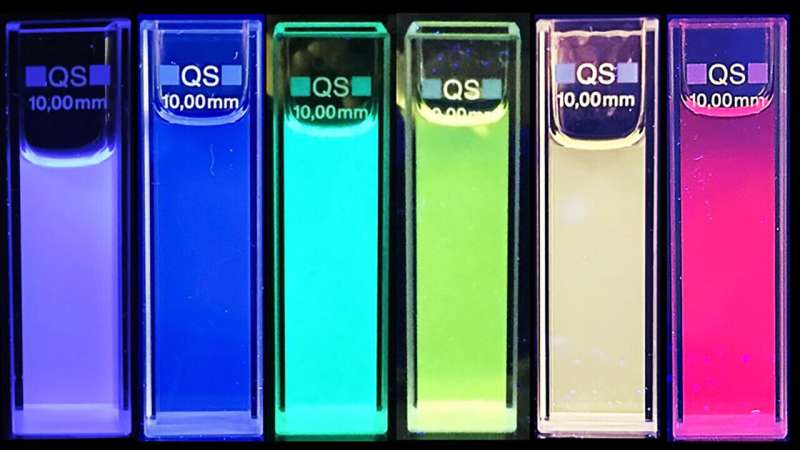This article has been reviewed according to Science X's editorial process and policies. Editors have highlighted the following attributes while ensuring the content's credibility:
fact-checked
peer-reviewed publication
trusted source
proofread
Pressure-cooking birch leaves to produce raw material for organic semiconductors

Today, petrochemical compounds and rare metals such as platinum and iridium are used to produce semiconductors for optoelectronics, such as organic LEDs for super-thin TV and mobile phone screens. Physicists at Umeå University in collaboration with researchers in Denmark and China, have discovered a more sustainable alternative. By pressure-cooking birch leaves picked on the Umeå University campus, they have produced a nanosized carbon particle with desired optical properties.
"The essence of our research is to harness nearby renewable resources for producing organic semiconductor materials," says Jia Wang, research fellow at the Department of Physics, Umeå University, and one of the authors of the study that has been published in Green Chemistry.
Organic semiconductors are important functional materials in optoelectronic applications. One application is organic light-emitting diodes, OLEDs, comprising ultra-thin and bright TV and mobile phone screens. Sharply increasing demand for this advanced technology is driving massive production of organic semiconductor materials.
Unfortunately, these semiconductors are currently produced mainly from petrochemical compounds and rare elements obtained through environmentally harmful mining. Moreover, these materials often contain so-called "critical raw materials" that are in short supply, such as platinum, indium and phosphorus.
From a sustainability point of view, it would be ideal if we can use biomass from plants, animals and waste to produce organic semiconductor materials. These starting materials are renewable and abundantly available. Research fellow Jia Wang and her colleagues at the Department of Physics, together with international partners, have succeeded in producing such a bio-based semiconductor material.
Birch leaves in pressure cooker
The synthesis process is simple: They picked birch leaves on the Umeå campus and cooked them in a pressure cooker. That produced "carbon dots" about two nanometers in size that emit a narrow-band, deep red light when dissolved in ethanol. Some of the optical properties of these birch leaf carbon dots are comparable to commercial quantum dots currently used in semiconductor materials, but unlike them, they contain no heavy metals or critical raw materials.
"It is important to note that our method is not limited to birch leaves," explains Jia Wang. "We tested different plant leaves with the same pressure cooking method, and all of them produced similar red-emitting carbon dots. This versatility suggests that the transformation process can be used in different locations."
Using the carbon dots in a light-emitting electrochemical cell device, the researchers were able to show that the brightness generated was 100 cd/m2, which is comparable to the light intensity from a computer screen.
"This result shows that it is possible to transition from depleting petroleum compounds to regenerating biomass as a raw material for organic semiconductors," says Jia Wang.
She emphasizes the broader potential of carbon dots beyond just light-emitting devices.
"Carbon dots are promising across various applications, from bioimaging and sensing to anti-counterfeiting. We're open to collaborations and eager to explore more exciting uses for these emissive and sustainable carbon dots," says Jia Wang.
More information: Shi Tang et al, Fluorescent carbon dots from birch leaves for sustainable electroluminescent devices, Green Chemistry (2023). DOI: 10.1039/D3GC03827K
Journal information: Green Chemistry
Provided by Umea University





















